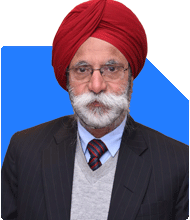Investing 100000/month, 50000/annum - What will be Corpus in 2030?
Ramalingam Kalirajan |10219 Answers |Ask -Follow
Mutual Funds, Financial Planning Expert - Answered on Nov 13, 2024
He has an MBA in finance from the University of Madras and is a certified financial planner.
He is the director and chief financial planner at Holistic Investment, a Chennai-based firm that offers financial planning and wealth management advice.... more

I am investing 100000 every month as SIP and 50000 annually. My present SIP Corpus is nearly 2Cr. How much is expected to be the total corpus in 2030 if I manage to continue the same investment model.
Below, I will offer a detailed breakdown of your current investment strategy and provide an in-depth assessment to project where your portfolio could potentially reach by 2030. Additionally, I will share some insights on how you can maximise your investment returns while keeping your tax efficiency in mind.
Let’s explore the factors that will influence your future corpus.
1. Current Investment Strategy: A Strong Foundation
You are currently investing Rs 1,00,000 monthly through SIPs and an additional Rs 50,000 annually.
Your present SIP corpus stands at Rs 2 Crore, which shows your disciplined approach.
Continuing this strategy till 2030 will be highly beneficial, given the power of compounding over time.
The consistent monthly SIP ensures rupee cost averaging, reducing market volatility impact.
2. Estimated Growth of Your SIP Corpus by 2030
Assuming you continue with Rs 1,00,000 monthly SIP and Rs 50,000 annually, your investments will grow significantly.
The market’s historical average returns for equity mutual funds can range between 10% to 15% per annum. However, actual returns can vary due to market conditions.
Compounding will exponentially boost your returns, especially if you remain invested without withdrawals.
By 2030, your SIP portfolio can potentially cross Rs 6 Crore, given stable market conditions.
This estimate considers a conservative growth rate. However, equity markets have been known to outperform during bullish periods.
3. Active Fund Management: The Better Choice
Many investors lean towards index funds, but actively managed funds often outperform in the Indian context.
Active funds have skilled fund managers who adjust portfolios based on market dynamics.
They can exploit opportunities in specific sectors and stocks to generate alpha over benchmarks.
Index funds, while low-cost, are purely passive. They mirror indices without considering market trends.
Actively managed funds may have higher expense ratios, but the potential for superior returns justifies the cost.
Especially in volatile or uncertain markets, active fund management can make a substantial difference.
4. Investing Through a Mutual Fund Distributor (MFD)
Direct funds may seem cost-effective as they have lower expense ratios. However, they lack professional guidance.
Regular funds, managed through an MFD with a Certified Financial Planner (CFP) credential, offer holistic support.
An MFD can help you align your investments with your financial goals, provide tax planning, and adjust your portfolio as needed.
Regular reviews by an MFD ensure your portfolio is optimised for changing market conditions.
Direct funds require you to track performance, handle documentation, and monitor taxation—all on your own.
Engaging with a Certified Financial Planner through MFDs helps you focus on strategy, not execution.
5. Tax Implications: Managing Your Gains Efficiently
The recent tax changes impact equity mutual funds’ gains. Long-term capital gains (LTCG) over Rs 1.25 lakh are taxed at 12.5%.
Short-term gains (STCG) are taxed at 20%, while debt funds’ gains are taxed as per your income slab.
Efficient tax planning is crucial. Consult with your CFP to time redemptions and optimise tax liabilities.
Regular fund investments offer better tax management compared to direct funds, given the advisory support.
6. Market Volatility and Economic Factors
While investing in equity funds, market volatility is a reality. However, the long-term growth potential outweighs short-term fluctuations.
SIPs protect your investments from timing the market. Rupee cost averaging ensures that you buy more units when prices are low.
Focus on staying invested even during market downturns. History shows markets rebound, and long-term investors benefit the most.
With India's economic growth prospects, equity funds have the potential to deliver strong returns in the coming years.
7. Diversification and Portfolio Rebalancing
Continue diversifying within mutual funds to reduce concentration risk.
Allocate your SIPs across large-cap, mid-cap, and multi-cap funds for a balanced approach.
Rebalance your portfolio annually with your Certified Financial Planner to align with changing market conditions.
Consider thematic or sectoral funds cautiously, as they carry higher risks.
Reinvest dividends and gains to harness compounding benefits further.
8. Emergency Fund and Liquidity Considerations
Maintain a separate emergency fund to cover at least 6 months of expenses. This will prevent premature withdrawals from your SIPs.
Avoid liquidating your investments for short-term needs. Instead, use other sources like fixed deposits or liquid funds.
9. Aligning Investments with Financial Goals
Define clear goals, such as retirement planning, children’s education, or buying a property.
Each goal requires a tailored investment approach. For instance, retirement planning should focus on growth funds.
Engage with your Certified Financial Planner for goal-based investment planning.
Long-term SIPs work best when aligned with specific objectives, ensuring a disciplined approach.
10. Tracking and Monitoring Your Investments
Review your portfolio semi-annually to ensure it’s performing as expected.
Monitor fund performance and exit underperformers if needed, based on your Certified Financial Planner’s advice.
Keep an eye on changes in taxation rules and market regulations that could impact your returns.
Ensure your SIPs continue automatically. If cash flows change, adjust SIP amounts accordingly.
Finally: Staying Committed to Your Financial Journey
The journey to Rs 6 Crore or beyond is achievable with consistency.
Avoid impulsive decisions based on short-term market movements.
Keep your focus on the long-term horizon and stick to your investment plan.
Seek periodic advice from your Certified Financial Planner to stay on track.
The discipline and patience you’ve shown so far are commendable. Continue this momentum.
By following these strategies, your SIP investments can help you achieve significant financial milestones by 2030 and beyond.
Best Regards,
K. Ramalingam, MBA, CFP,
Chief Financial Planner,
www.holisticinvestment.in
https://www.youtube.com/@HolisticInvestment
You may like to see similar questions and answers below
Omkeshwar Singh | Answer |Ask -Follow
Head, Rank MF - Answered on Dec 06, 2022
Sanjeev Govila | Answer |Ask -Follow
Financial Planner - Answered on Feb 06, 2024
Ramalingam Kalirajan |10219 Answers |Ask -Follow
Mutual Funds, Financial Planning Expert - Answered on May 08, 2024
Ramalingam Kalirajan |10219 Answers |Ask -Follow
Mutual Funds, Financial Planning Expert - Answered on Jul 02, 2024
Ramalingam Kalirajan |10219 Answers |Ask -Follow
Mutual Funds, Financial Planning Expert - Answered on Jul 15, 2024
T S Khurana |502 Answers |Ask -Follow
Tax Expert - Answered on Aug 11, 2025
T S Khurana |502 Answers |Ask -Follow
Tax Expert - Answered on Aug 11, 2025
Nayagam P P |10168 Answers |Ask -Follow
Career Counsellor - Answered on Aug 11, 2025
Radheshyam Zanwar |6277 Answers |Ask -Follow
MHT-CET, IIT-JEE, NEET-UG Expert - Answered on Aug 11, 2025
Nayagam P P |10168 Answers |Ask -Follow
Career Counsellor - Answered on Aug 11, 2025
Nayagam P P |10168 Answers |Ask -Follow
Career Counsellor - Answered on Aug 11, 2025
Nayagam P P |10168 Answers |Ask -Follow
Career Counsellor - Answered on Aug 11, 2025
Nayagam P P |10168 Answers |Ask -Follow
Career Counsellor - Answered on Aug 11, 2025
Nayagam P P |10168 Answers |Ask -Follow
Career Counsellor - Answered on Aug 11, 2025
Radheshyam Zanwar |6277 Answers |Ask -Follow
MHT-CET, IIT-JEE, NEET-UG Expert - Answered on Aug 11, 2025























